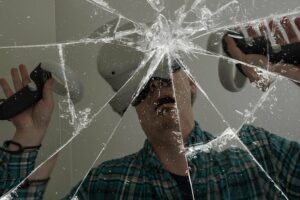ISO is the one camera setting you can change without it affecting how your image looks too much, a minimum of for lower worths. At greater worths, noticeable digital sound can end up being a problem. So, let’s take a look at how to pick the ideal worth for various scenarios.
RELATED: Your Camera’s Most Important Settings: Shutter Speed, Aperture, and ISO Explained
The Default: Your Cam’s Base ISO

Every electronic camera has a base ISO. This is the standard level of sensitivity of the sensing unit, and it’s the worth at which it runs finestwith the highest dynamic range At every other worth, the camera amplifies the signal generated by light hitting the sensor which in turn magnifies the amount of digital noise in the image.
For the large bulk of DSLRs and mirrorless electronic cameras, the base ISO is 100, although a couple of high-end Nikon electronic cameras have a base ISO of 64.
The base ISO isn’t always the most affordable ISO setting. For instance, my Canon 5D III has an ISO 50 setting, however this is accomplished by lowering the gain on the sensing unit.
Considering that you get the greatest quality images at the base ISO, it ought to be your default for any scenario you can utilize it. If you can get the shutter speed you want and the aperture you want with ISO 100 (or ISO 64, inspect your electronic camera’s handbook to be sure), then that’s what you need to utilize.
Note: The image above was shot on a Canon 650 D at ISO100 The sample images for each ISO worth listed below are cropped variations of the very same image chance at the specified ISO worth.
ISO 200-800

Digital electronic cameras are extraordinary. They have actually occurred in leaps and bounds for many years, and the truth is, any contemporary electronic camera can take extraordinary images in between ISO 200 and ISO 800 with nearly no noticeable drop in image quality– or a minimum of, not without you searching for one.
If you require to utilize a much faster shutter speed or narrower aperture than your base ISO will enable, you can with confidence increase the ISO to around 800 without it having excessive of a result on the image. I routinely shoot pictures at ISO 400 so that I can ensure my shutter speed will not drop too low.

I’m type of arbitrarily calling ISO 800 the top of this variety since it’s as high as the majority of entry level crop sensing unit electronic cameras can go without seeing some decrease in image quality, however on some more recent and full-frame cameras, you’ll have the ability to press it greater. The very best thing to do is experiment with your electronic camera and see how it runs at various worths.
ISO 800-3200

Someplace in between ISO 800 and ISO 3200 variety, you will begin to see noticeable digital sound in your image even if you aren’t looking too carefully for it. Once again, it’s type of camera-specific; with lower end or older electronic cameras, you’ll see it at lower ISOs than with greater end or more recent electronic cameras.
This variety is type of the greatest you can press your electronic camera in the majority of scenarios without making a certain sacrifice in image quality. It’s not the greatest you can press it, however it’s the greatest you can go and dependably get excellent images.

Increasing ISO to this point is a tradeoff. You’re probably shooting at night or working someplace dark and, if you can’t decrease your shutter speed or expand your aperture anymore, then upping the ISO is your only choice. In this variety, you’re still going to get functional images, however they simply will not be the greatest quality. Still, a great picture is much better than no picture.
ISO 6400 and Beyond

Once you begin to press previous ISO 3200, you will see a significant boost in sound. As constantly, the specific worth depends upon your electronic camera however, at some time, the images will end up being unusable, a minimum of for expert contexts.
Where likewise depends upon what you’re shooting. I did a series of night pictures at high ISO worths and, since I welcomed the loud appearance, I had the ability to shoot them at ISO 6400 without fretting excessive.

On the other hand, if you’re opting for a very tidy appearance, then you’re most likely out of luck.
The other choice is to take a look at other methods of lowering sound. Astrophotographers regularly shoot multiple photos at ISO 6400 and after that integrate utilize them in post-production to balance out the sound from the other images. Considering that sound is random, it’s not likely that the very same areas will reveal sound in every image.
ISO is typically the very first setting to get altered when you require to increase a direct exposure, which’s great– approximately a point. When you see a noticeable decline in image quality, you require to begin believing more thoroughly.








